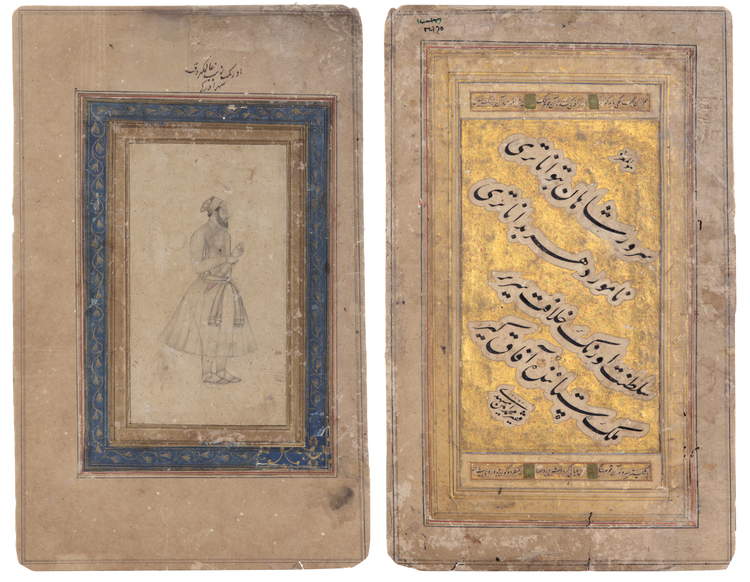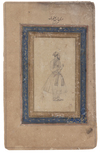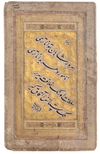A PORTAIT OF AURANGZEB, (AKA ALAMGIR), THE REVERSE WITH A CALLIGRAPHIC QUATRAIN, INDIA, 17TH CENTURY
Portrait of Mughal emperor Aurangzeb ‘Alarmgir’. A calligraphic quatrain on the reverse 1072 AH/1662 AD. Signed Fakir Mohamed Amin Mashadi. On the reverse a calligraphic quatrain; a Persian manuscript on paper, with 5 lines of black nastaliq on paper, the gold ground painted on top, within gold and polychrome rules, laid down on card, the margins with fine floral scrolls. 40.5 by 25.5 cm.
CATALOGUE NOTE: This fine Mughal portrait of a prince dressed in jama over tight-fitting pyjamas, a small inscription at top reading ‘Aurangzeb during Deputy of the Sultanate’ Aurangzeb was the third son of Shah Jahan, who took the title of ‘Alamgir (‘Seizer of the Universe’) when he assumed the throne after imprisoning his father in 1658. Aurangzeb was ruthless in his campaigns and orthodox in his religious beliefs, resulting in the alienation of the Hindu Rajput courts. Much of his long reign was spent battling rebellions. His religious austerity increased throughout his reign, turning him against music, dance and painting and by 1668 Aurangzeb had virtually closed the royal ateliers. As a result the surviving portraits of Aurangzeb were either painted early in his reign or after his death.



